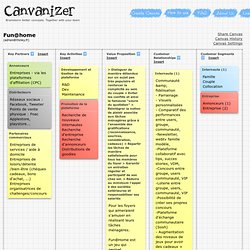Do you remember the first time when you saw the real-time collaboration feature for Google Docs first time? Now it seems obvious, but in 2005 seeing changes happen live felt nothing short of magical.
Today, after ten years, Google Drive continues to add improvements, Microsoft is offering real-time collaboration in their on-line version of Office, and Dropbox is working on a real-time collaboration app of their own.
But, still many people are stuck using the email-and-collect-revisions method of collaboration. Today, many cool websites and apps looks at four tools that fix that for you.
1. Fiddle.md: It is limited to writers in one key way, i.e. it offers a word processor. While for millions word processors are the default tool for writing, but for a growing number of people their paper-focused design is obsolete. And so the popularity of Markdown is growing, which is a quick way to format documents destined for the web.
Fiddle.md allows you collaborate on Markdown files. The interface features a real-time-preview, and also you don't even need an account to try the service.
Today, after ten years, Google Drive continues to add improvements, Microsoft is offering real-time collaboration in their on-line version of Office, and Dropbox is working on a real-time collaboration app of their own.
But, still many people are stuck using the email-and-collect-revisions method of collaboration. Today, many cool websites and apps looks at four tools that fix that for you.
1. Fiddle.md: It is limited to writers in one key way, i.e. it offers a word processor. While for millions word processors are the default tool for writing, but for a growing number of people their paper-focused design is obsolete. And so the popularity of Markdown is growing, which is a quick way to format documents destined for the web.
Fiddle.md allows you collaborate on Markdown files. The interface features a real-time-preview, and also you don't even need an account to try the service.
2. GraphPaper: If you are looking for a way to combine a bunch of different collaboration tools, then GraphPaper is probably worth a look. This tool lets you quickly make a sheet combining images, text and even embeds from other websites.
3. Canavaniser: If you love the idea of brainstorming with your team and are looking for something simple, then try Canavanizer. This tool provides you a variety of brainstorming templates which you can use to think up ideas with your team.
4. Frame.io: This app looks to make collaborating on anything – from images to videos to sound – easily. In Frame.io, annotation tools, comments and the ability to upload various revisions of the same file all are there in one place. A free account gives you 2 GB to work with, for more than that you will have to upgrade.
These were the four insanely useful collaboration tools that your team should know. But, there might be chances that one of your favorite tools wasn't covered. So, share your favorite real-time collaboration tools with us in the comments below.



